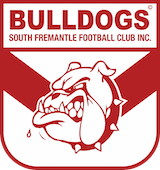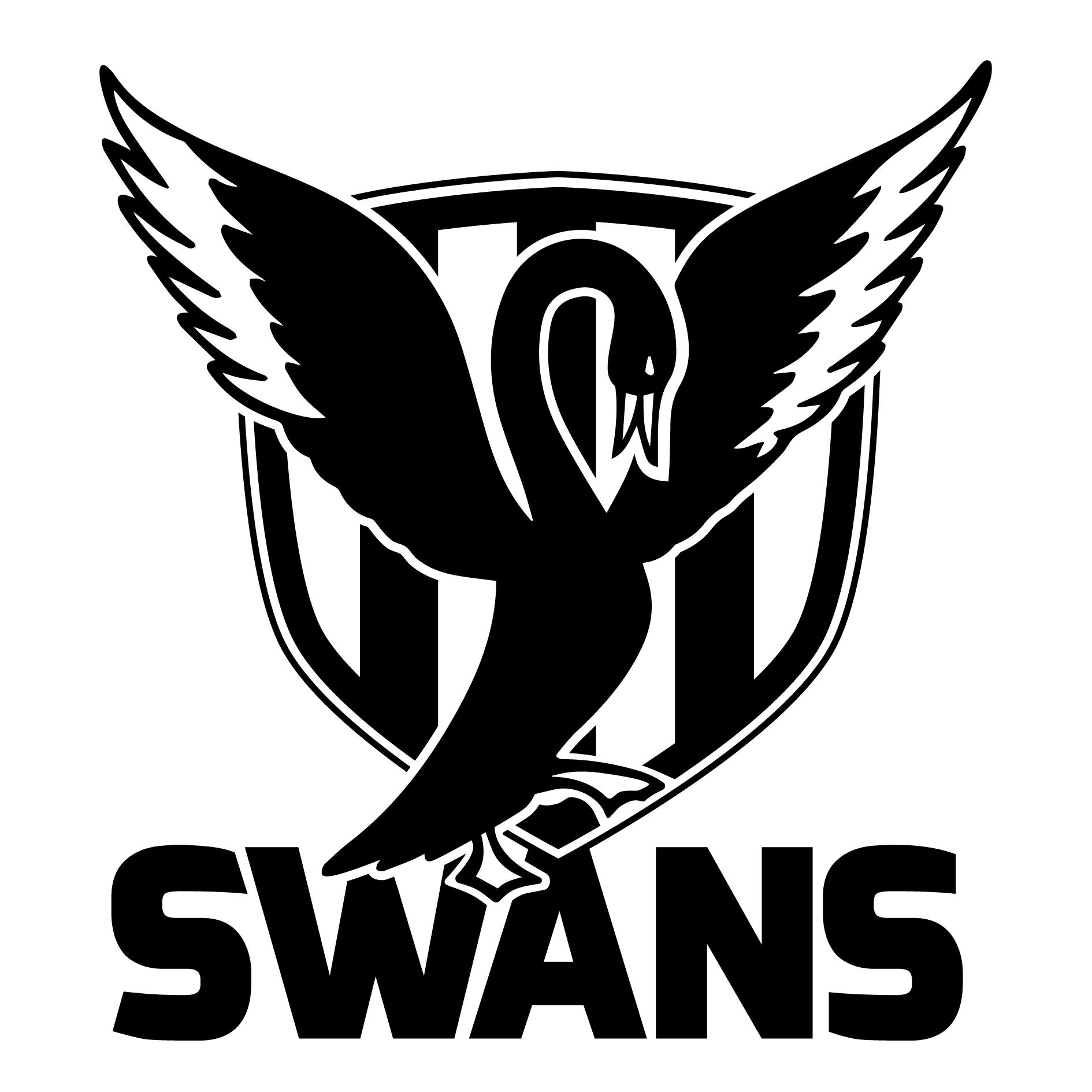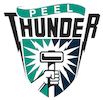Select grade below
- Round 2Sat, 12 Apr 20252:30 PM
 VS
VS Revo Fitness Stadium
Revo Fitness Stadium - Round 3Fri, 18 Apr 20257:10 PM
 VS
VS Sullivan Logistics Stadium
Sullivan Logistics Stadium - Round 4Fri, 25 Apr 20251:40 PM
 VS
VS Revo Fitness Stadium
Revo Fitness Stadium - Round 5Fri, 2 May 20257:10 PM
 VS
VS Joondalup Arena
Joondalup Arena - Round 6Sat, 10 May 20252:30 PM
 VS
VS Revo Fitness Stadium
Revo Fitness Stadium - Round 7Sat, 24 May 20252:30 PM
 VS
VS Steel Blue Oval
Steel Blue Oval - Round 8Sat, 31 May 20252:30 PM
 VS
VS Revo Fitness Stadium
Revo Fitness Stadium - Round 9Sat, 7 Jun 20254:10 PM
 VS
VS Sullivan Logistics Stadium
Sullivan Logistics Stadium - Round 11Sat, 21 Jun 20252:30 PM
 VS
VS Revo Fitness Stadium
Revo Fitness Stadium - Round 12Sat, 28 Jun 202511:10 AM
 VS
VS Mineral Resources Park
Mineral Resources Park - Round 13Sat, 5 Jul 20251:45 PM
 VS
VS Fremantle Community Bank Oval
Fremantle Community Bank Oval - Round 15Sat, 19 Jul 20252:30 PM
 VS
VS Revo Fitness Stadium
Revo Fitness Stadium - Round 16Sat, 26 Jul 20252:30 PM
 VS
VS East Fremantle Oval
East Fremantle Oval - Round 17Sat, 2 Aug 20252:30 PM
 VS
VS Revo Fitness Stadium
Revo Fitness Stadium - Round 18Sat, 9 Aug 20252:30 PM
 VS
VS Revo Fitness Stadium
Revo Fitness Stadium - Round 19Sat, 16 Aug 20252:30 PM
 VS
VS Mineral Resources Park
Mineral Resources Park - Round 20Sat, 23 Aug 20252:30 PM
 VS
VS Revo Fitness Stadium
Revo Fitness Stadium
History - Claremont FC
HISTORY
It was formed as the amateur Cottesloe Beach Football Club in 1906, and joined the peak amateur competition, the Western Australian Football Association the following year. The club dominated the WAFA from the outset, winning premierships from 1907–1910, and in 1908 it beat WAFL club Subiaco in a challenge match.
Applications by the club to join the WAFL were rejected for many years. In 1919, the Cottesloe Beach club merged with a consortium from Claremont which was also attempting to gain entry to the WAFL and had no contracted players, but claimed to have secured use of the Claremont Showgrounds, as a home ground. In 1921, the club was admitted to the WAFL "B" Grade competition, asClaremont-Cottesloe, using the same blue and gold colours as the local swimming club. It was finally admitted to the senior league in 1926.
The inaugural captain-coach was former South Fremantle and Richmond player Norm McIntosh, who was the only player with senior experience. McIntosh's young squad could only win one game in their first season.
In 1927, the club moved to Claremont Oval, where it has been the club's home ground, with the exception of 1945 and 1946, where, due to the grandstand burning down in 1944, and the condition of the playing surface, the club shared with Subiaco Oval with the Subiaco Football Club.
Between 1926 and 1935 Claremont won just 40 and drew 2 of 183 games for an overall success rate of 22.4%. The nearest they came to qualifying for the finals was in 1929 when, with 8 wins and 10 defeats, they finished just four points plus percentage behind 4th placed Subiaco. Even when Swan Districts was admitted to the competition in 1934 Claremont-Cottesloe continued to underachieve, ending up with the wooden spoon for the 7th time in 9 seasons.
In 1935 the club officially dropped 'Cottesloe' from its name, becoming simply 'Claremont', and with the return of George Moloney in 1936 following his five seasons with Geelong Football Club in Australian football's 'big league' the VFL Claremont enjoyed its best WANFL season to date, winning 12 and losing 8 of its home and away matches to qualify for the finals in 2nd place. A 5 point 2nd semi final defeat of minor premier East Fremantle Football Club then earned Claremont premiership favouritism, a state of affairs which intensified still further when it was learned that their grand final opponents would not be Old Easts, but the Royals (East Perth Football Club), which had finished the minor round in 4th place, but had surprisingly overturned East Fremantle in the preliminary final by a solitary point. The 1936 WANFL grand final attracted 20,874 spectators to Subiaco Oval, who witnessed East Perth reaching a 11.5 (71) to 9.6 (60) victory.
Claremont again finished runners-up a year later after raising hopes, first by finishing the home and away rounds with a 13–5–1 record to qualify for the finals as minor premiers, and then by overcoming East Fremantle in the 2nd semi final by 14 points. However, when the stakes were raised a fortnight later against the same opponent Claremont was found lacking, eventually going under by 10 points.
In 1938 the club replaced coach Dick Lawn with Johnny Leonard, a former Sandover Medallist, who had already coached successfully at Ballarat, Geelong and West Perth. The club qualified for the finals in 2nd place and scored a 2nd semi final victory over East Fremantle, winning, 17.19 (121) to 13.18 (96). The grand final, again against East Fremantle however resulted in a draw, only the second time in WA(N)FL history. In the subsequent grand final replay Claremont won by 22 points, 14.17 (111) to 11.13 (79), breaking their premiership drought. 1939 although the club lost the 2nd semi final against East Perth it won the preliminary final against East Perth saw the club win its second premiership, 10.17 (77) to 11.5 (71). In the grand final re-match with East Fremantle, Claremont went on to win 14.11 (95) to 11.10 (76) obtaining its second premiership.
1940 saw Claremont again reach the finals, losing the 2nd semi final against the South Fremantle Football Club before the club prevailed against East Fremantle in the preliminary final. In the grand final Claremont went on to beat South Fremantle obtaining their third successive premiership.
Between 1942 and 1944, owing to the demands of World War II, the WANFL operated on a limited, under age only basis and after open age competition returned in 1945 Claremont commenced its longest period in the football wilderness. In 1945 it won only two games and finished last, kicked its lowest score ever against Perth, and had a losing streak of seventeen games into 1946, when it again was last with only three wins. Although it avoided the wooden spoon for the next eleven years, only in 1950 (fifth) and 1952 (fourth by one percent from East Fremantle) did it finish higher than sixth in an eight-team competition in the next seventeen years.
After claiming the wooden spoon in 1962 and 1963 Claremont appointed a complete outsider, former East Fremantle rover Jim Conway as coach for 1964. At the end of that season Claremont scraped into the finals in 4th place. The club went on to beat Subiaco in the 1st semi final, which was then followed by a win against the Demons (Perth Football Club) in the preliminary final, with Claremont winning 14.18 (102) to 15.8 (98) against East Fremantle in the grand final and securing the club's fourth premiership.
Claremont failed to follow this meteoric rise, and between 1966 and 1978 participated in the finals only twice. In 1971 they were knocked out easily by an Alan Joyce-coached East Fremantle outfit, but in 1972 they lost only three home-and-away games and with players of the calibre of Graham Moss, Bruce Duperouzel, Colin Tully and Daryl Griffiths, were firm flag favourites, only to be beaten in both the second semi and grand finals by a more physical East Perth side. Despite recruiting Essendon full forward Geoff Blethyn, the Tigers fell to last in 1973 with only four wins, and did even worse in 1975 with only three wins as Moss went to Essendon. The club were involved in an unusual incident in their Round 20 clash against West Perth during the 1976 season. Claremont coach Mal Brown replaced John Colreavy with Ross Ditchburn at three-quarter time, but when another player went off injured in the last quarter, Brown sent Colreavy back onto the ground, in contravention of the rule which specified that a player being replaced could not return to the field. Claremont lost the game 20.21 (141) to 13.18 (96), but had their score annulled after the game. When Moss returned in 1977 as captain-coach, he gradually moulded one of the most individually talented teams in WAFL history with such players as Jim and Phil Krakouer, Ken Hunter, Wayne Blackwell, John Annear, and Warren Ralph. In 1981 they kicked an Australian record 3,352 points in 21 matches, and won their fifth flag over an inaccurate South Fremantle. Despite lacking the “enforcer” needed to win many flags under pressure, between 1979 and 1994 Claremont played in the finals every year bar 1985 and 1992, and under Gerard Neesham’s extremely innovative coaching methods and “chip and draw” style, they won twenty and drew one of their last 21 games in 1987. Neesham’s skill was such that Claremont reached five successive grand finals for three flags despite the loss of most key players to the VFL (later AFL).
After 1994, Claremont’s fortunes declined somewhat, and financial difficulties threatened their existence in the middle 1990s. However, at WAFL level they managed to remain competitive throughout the 1990s and 2000s if never threatening for a premiership until 2004, when they were thrashed by Subiaco in the grand final, a fate which befell Claremont again in 2005 from South Fremantle.
2007 SEASON
Claremont ended the season strongly, claiming the minor premiership, but lost to Subiaco in the WAFL Grand Final on 23 September 2007. Coach Ashley Prescott left the club at the end of the season to take up an assistant coaching role with Essendon. Prescott's replacement is former assistant coach, Roger Kerr (former East Fremantle player and father of West Coast Eagles player, Daniel Kerr), who has been given a two year contract. Claremont also won the 2007 Rodriquez Shield (the team which has the best League, Reserves and Colts record combined).
2008 SEASON
Claremont's 2008 campaign kicked off on 22 March against West Perth at Claremont Oval, which Claremont won by 14 points. It was Roger Kerr's first game in charge of the club. He took the reins of the club, following the loss of experienced players such as Daniel Bandy (retired), Rowan Jones (retired), Luke Toia (retired), as well as Mitch Morton (Richmond) and Cale Morton (Melbourne). Other less notable losses include Luke Dwyer (retired), Darren Harper (retired), Aaron Jarvis (retired), Trent Martin (East Perth), Tim Nelli (East Fremantle), Tom Matson (overseas) and Rory Walton (overseas). The Tiger's only gain this year was former-Brisbane Lions midfielder Marcus Allan.
The Tigers finished the season second last, saving themselves from the wooden spoon with a victory on the last day of the competition.
2009 SEASON
Claremont lost their first match of 2009 and things were starting to look a bit wobbly after they lost their second match. The losing streak continued, during which they lost nine games in a row. At the end of April the club decided to cut short Kerr's two-year coaching contract. Claremont appointed Simon McPhee as a caretaker coach, becoming the club's 30th league coach. McPhee had been the coach of Claremont's Colts team for the last three seasons. Under the new coach the Tigers started to win a couple of games. They finished in eighth place on the ladder, with seven wins from twenty matches.
The Claremont Colts side showed a great future for the league side, by defeating Peel Thunder in the Colts Grand Final, by over 8 goals.
Another positive was that Chad Jones won the Bernie Naylor Medal, kicking 77 goals
2010 SEASON
Claremont capped off a fantastic season in 2010, claiming the Minor Premiership. They also reached the Grand Final against Swan Districts. The Reserves also claimed the minor premiership and set up a grand final clash with East Perth.
Claremont dominated the home and away season finishing atop the table losing just twice and drawing once (a loss and a draw to the eventual Premiers Swan Districts and the final round defeat by East Perth). In the 2nd Semi Final Claremont crushed Swans at Claremont Oval by 50 points 17.17 (119) to 10.9 (69) with former Fremantle Dockers player Andrew Foster kicking 5 goals. Swan Districts then cruised to a win over East Perth in the Preliminary Final to set up a Grand Final for the ages between by far the 2 best sides in the competition in 2010. A classic contest it turned out to be too with the match swinging from one side to the other or the entire day, a pack mark by David Crawford deep into time-on was converted and seemed to give Claremont the flag for the first time in 14 years, but as the match wore on into the 32nd minute of the Final quarter Sandover Medallist Andrew Krakouer popped up to put Swans back in front. This time there was no reply from the Tigers and they went down in one of the finest ever WAFL Grand Finals 14.16 (100) to 14.15 (99). Key match-ups included Krakouer's dominance over Kane Mitchell and the move of Simon Starling to the forward line where he was virtually ineffective.
The Reserves would win the Reserve grade Grand Final over East Perth 13.6 (84) to 10.12 (72).
Midfielder Luke Blackwell would cap another stellar season by winning the EB Cook Medal as the Best & Fairest player for the Tigers in 2010, he would also finish as Runner Up to Andrew Krakouer in the Sandover Medal count.
2011 SEASON
The club were once again the dominant side in the competition completing the season at the top of the league ladder winning 14 from 19 games and this time were successful in claiming the premiership. In the Grand Final Claremont defeated Subiaco by 56 points, 19.13 (127) to 10.11 (71), with Beau Wilkes of Claremont winning the Simpson Medal as best on ground. The 2011 Sandover Medal was won by Luke Blackwell.
Club Captain, Clancy Rudeforth, announced his retirement from league football following the Grand Final victory.
FOXTEL CUP
Claremont reached the final of the 2011 Foxtel Cup, losing out 59 to 38 against VFL club Williamstown at Subiaco.
Once again in 2012 Claremont made the final, this time playing another VFL club Werribee, with the match again played at Subiaco. Claremont won the final with a score of 99 to 55, with Thomas Lee being awarded the Coles Medal for his best on ground performance.
2012 SEASON
2012 was another extremely successful season for the Claremont Football Club with the League and Reserves sides both winning premierships and the Colts side coming within 2 points of a Grand Final berth. The Club won its 15th Rodriguez shield as a result.
Classy onballer Kane Mitchell took out the EB Cook Medal as the clubs fairest and best and also claimed the Sandover Medal for his dominant performances during the 2012 WAFL season. Paul Medhurst claimed the Simpson Medal for being best on ground during the side’s 26pt victory against East Fremantle in the 2012 WAFL Grand Final.
The Grand Final win topped off what was an extremely successful season for first year senior coach Marc Webb.
CLUB HONOURS
WAFL Premierships:
1938, 1939, 1940, 1964, 1981, 1987, 1989, 1991, 1993, 1996, 2011, 2012,
Runners-Up:
1936, 1937, 1942, 1972, 1982, 1983, 1988, 1990, 1994, 2004, 2005, 2007, 2010
WAFL Wooden spoons:
1926, 1927, 1928, 1931, 1932, 1933, 1934, 1945, 1946, 1958, 1962, 1963, 1973, 1975
Reserves Premierships:
1937, 1977, 1980, 1982, 1987, 1990, 2000, 2010, 2011, 2012, 2016
Colts Premierships:
1976, 1977, 1978, 1979, 1986, 1988, 1993, 1994, 1995, 1996, 1997, 2009, 2013, 2015, 2016, 2019
Fourths Premierships:
1966, 1968
Rodriguez Shield:
1972, 1979, 1981, 1982, 1987, 1988, 1989, 1990, 1991, 1993, 1994, 2007, 2010, 2011, 2012, 2020, 2021.
INDIVIDUAL HONOURS
Sandover Medalists:
1932: Keith Hough, 1933–34: Sammy Clarke, 1936: George Moloney, 1949: Gordon Maffina, 1967: John Parkinson, 1984: Michael Mitchell/Steve Malaxos, 2005: Jaxon Crabb, 2007: Anthony Jones, 2011: Luke Blackwell, 2012: Kane Mitchell: Jye Bolton, 2016: Jye Bolton, 2018, Bailey Rogers, 2021
Bernie Naylor Medalists:
1940: George Moloney (129), 1943: Robin Farmer (97), 1976: Norm Uncle (91), 1981: Warren Ralph (127), 1982: Warren Ralph (115) 1983: Warren Ralph (128), 1991: John Hutton (100), 2001: Paul Medhurst (78), 2009: Chad Jones (77), 2010: Chad Jones (85)
All Australians:
1966 & 1969: John McIntosh, 1979 & 1980: Ken Hunter, 1986: Steve Malaxos, 1985 & 1986: Michael Mitchell
Tassie Medallists:
1947: Les McClements
RECORDS
Highest Score:
Round 17, 1981 - 39.20 (254) vs. Perth at Claremont Oval
Lowest Score:
Round 15, 1945 - 1.3 (9) vs. Perth at WACA
Greatest Winning Margin:
Round 10, 2010 - 194 points vs. Peel at Claremont Oval
Greatest Losing Margin:
Round 10, 1958 - 147 points vs. East Perth at Perth Oval
Most Games:
Darrell Panizza 274 (1979–1995)
Record Home Attendance:
Round 7, 1983 - 18,268 vs. South Fremantle.
Record Finals Attendance:
1982 Grand Final - 50,883 vs. Swan Districts at Subiaco Oval
AFL Draftees:
64 (not including rookies)










